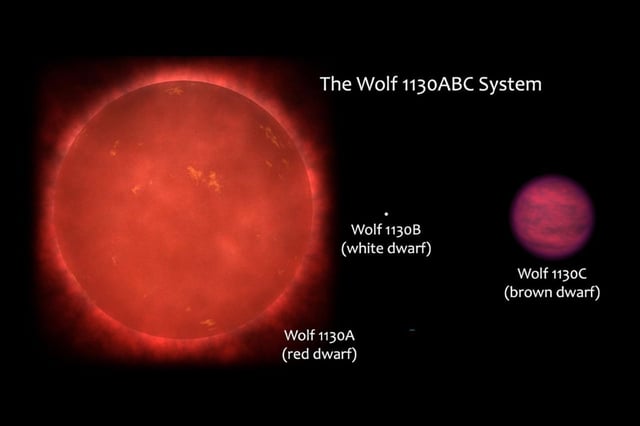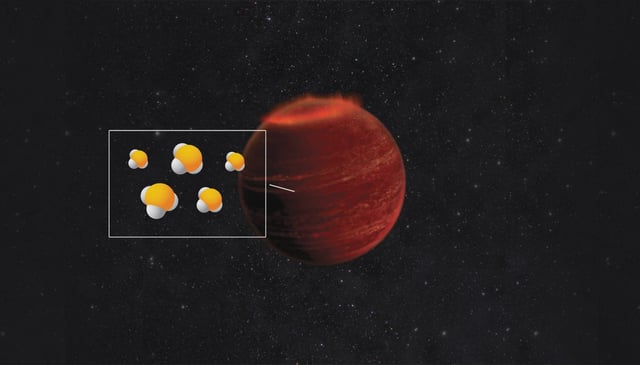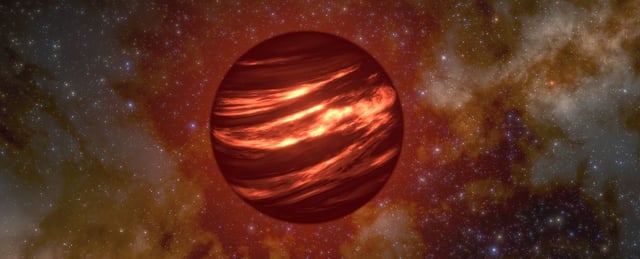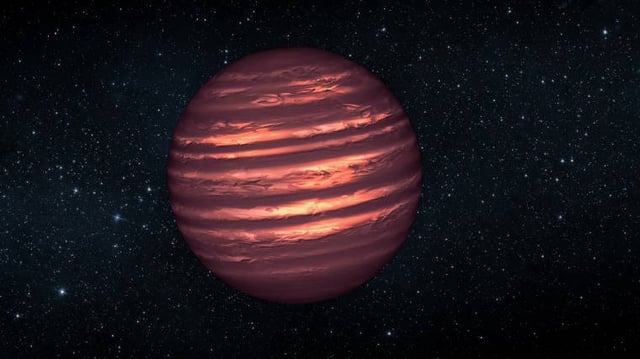Overview
- Using JWST’s NIRSpec, researchers identified multiple phosphine absorption lines in Wolf 1130C corresponding to an abundance of about 0.100 parts per million.
- This is the first clear detection of phosphine in a brown dwarf and the measured level matches long-standing atmospheric model predictions, comparable to Jupiter and Saturn.
- The result spotlights a broader discrepancy because many other brown dwarfs and giant exoplanets show phosphine far below predicted levels.
- Study authors suggest Wolf 1130C’s low metallicity could favor phosphine formation or that local phosphorus enrichment from its white dwarf companion may play a role, and they plan further JWST observations to test these ideas.
- Wolf 1130C is an ancient, metal-poor brown dwarf about 54 light-years away in the Wolf 1130ABC system, and atmospheric retrievals led by Eileen Gonzales underpin the abundance estimate reported in Science (DOI: 10.1126/science.adu0401).



